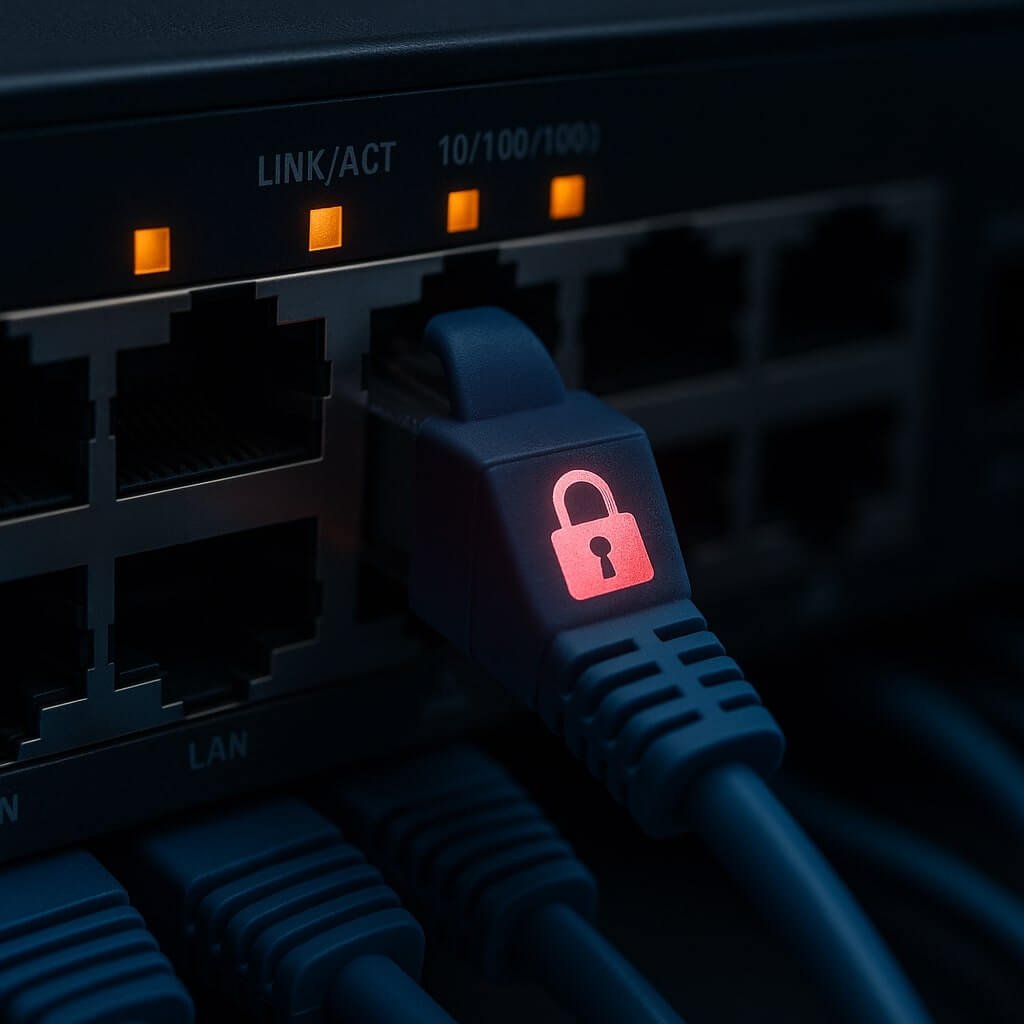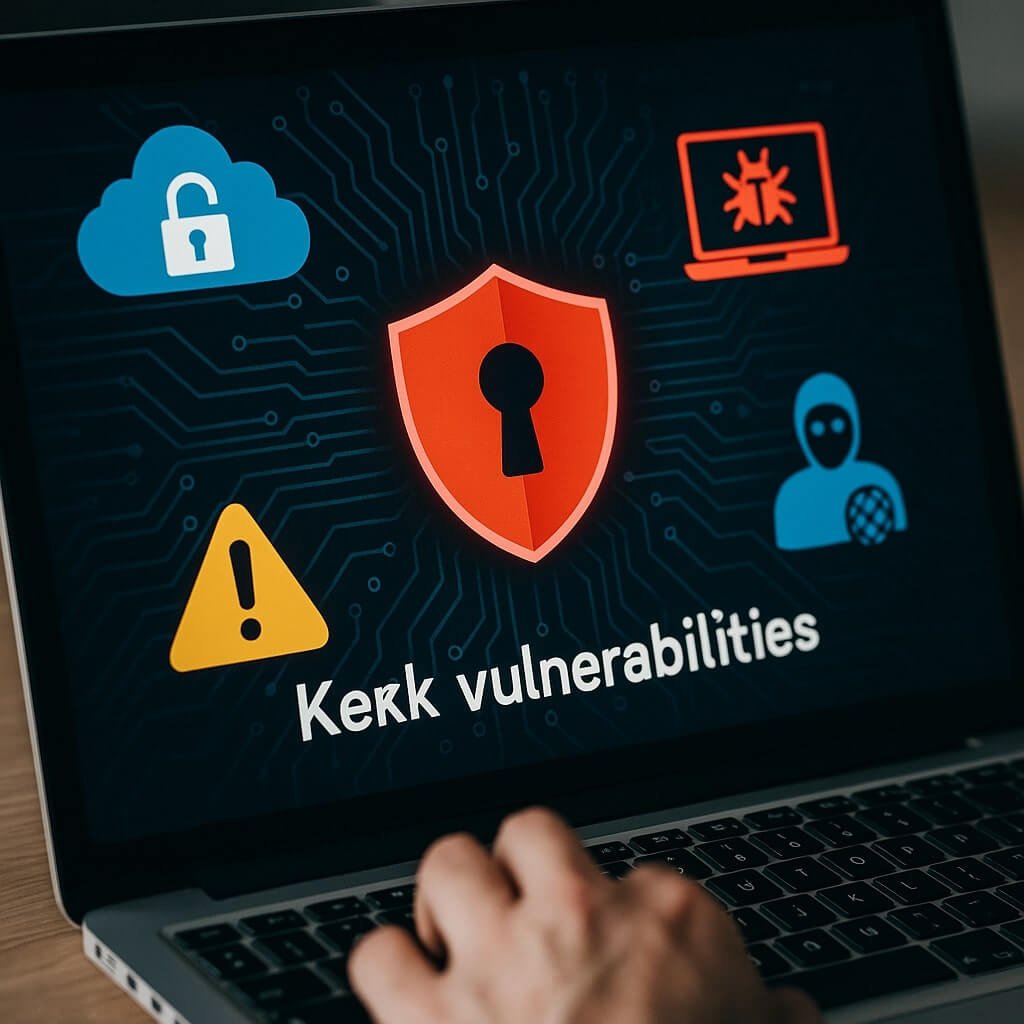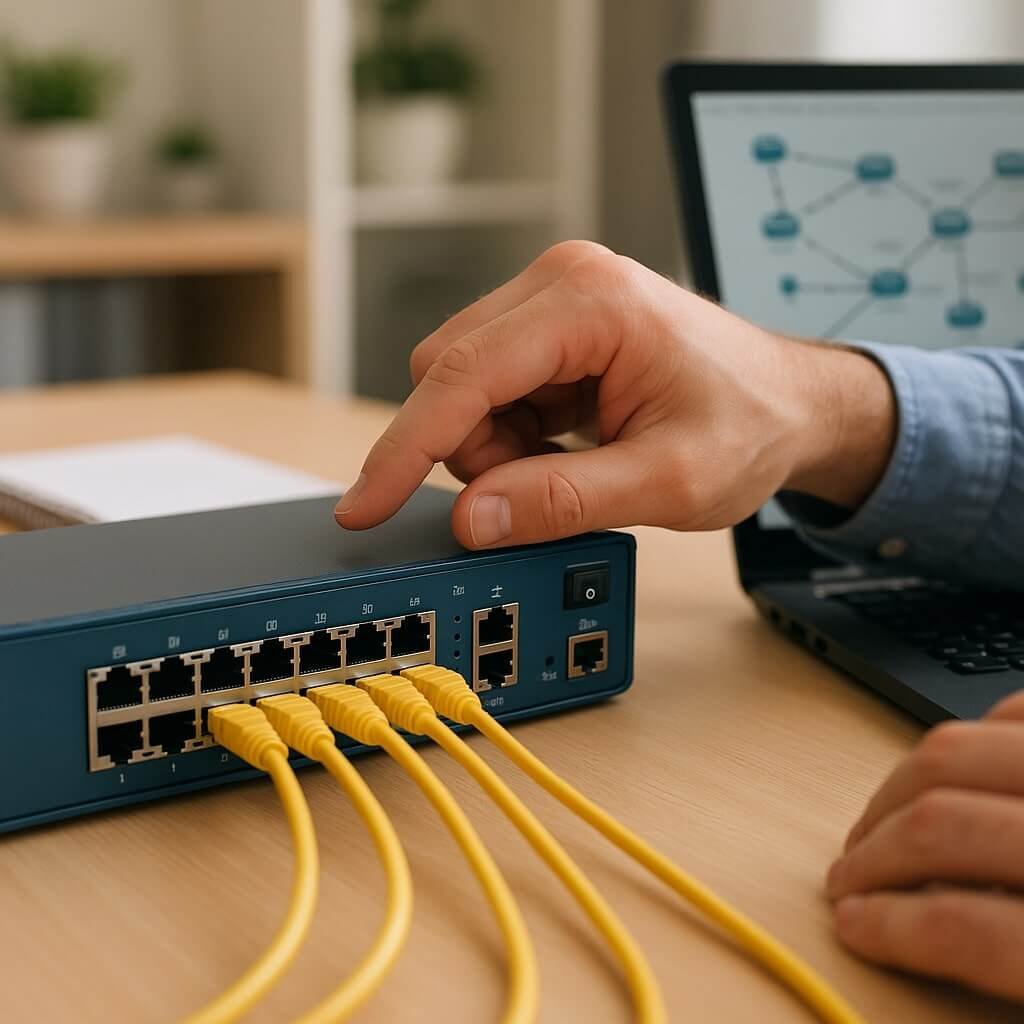You may not realize how many common network security vulnerabilities could jeopardize your systems. Weak passwords are a frequent target, while unpatched software can leave gaping holes for attackers. Insecure configurations might expose vital assets, and a lack of encryption can put sensitive data at risk. Understanding these vulnerabilities is essential, but it’s only the beginning. Let’s explore how these factors come together to create a precarious security landscape.
Key Takeaways
- Weak passwords are easily compromised, making them a major vulnerability in network security that requires complexity and regular updates.
- Unpatched software can lead to cyber attacks, as outdated systems harbor exploitable vulnerabilities that cybercriminals actively target.
- Insecure network configurations, such as misconfigured firewalls and default credentials, can grant unauthorized access to critical systems.
- Lack of encryption leaves sensitive data exposed, allowing unauthorized interception and access during transmission over networks.
- Social engineering attacks manipulate individuals into revealing sensitive information, exploiting human psychology to bypass technical security measures.
Weak Passwords
Weak passwords represent a considerable vulnerability in network security, often serving as the first line of attack for cybercriminals.
You need to understand that password strength relies on complexity, length, and unpredictability. Simple, easily guessable passwords can be cracked in minutes, exposing your sensitive data.
Effective password management practices are essential; they involve creating strong passwords, regularly updating them, and utilizing password managers to store them securely.
Adopting robust password management strategies is crucial for safeguarding your sensitive information.
Implementing multi-factor authentication adds an additional layer of protection, greatly improving your security posture.
Regularly evaluating your passwords against known breaches can further mitigate risks.
Unpatched Software
Unpatched software poses significant risks to your network security, often serving as an entry point for cyber attacks.
Common applications like operating systems, web browsers, and plugins frequently harbor vulnerabilities that attackers exploit if left unaddressed.
To mitigate these risks, it’s crucial to implement best practices for updates and patches, ensuring your systems remain fortified against emerging threats.
Impact of Unpatched Software
When software remains unpatched, it creates a significant vulnerability that can be exploited by cybercriminals.
These software vulnerabilities often arise from known bugs that developers have identified but not addressed. If you neglect to implement effective update strategies, you leave your systems open to attacks, such as malware infections or data breaches.
Cybercriminals actively scan for these unpatched systems, knowing they can exploit them with relative ease. The consequences can be severe, leading to loss of sensitive information, financial damage, and reputational harm.
To mitigate these risks, prioritize regular updates and patch management, ensuring that all software is current and secure. Staying proactive in addressing vulnerabilities is essential for maintaining a robust security posture.
Common Vulnerable Applications
Many widely-used applications, if not regularly updated, can become prime targets for cybercriminals. Unpatched software often harbors vulnerabilities that can be exploited, particularly through insecure APIs and vulnerable plugins.
When you neglect to apply security updates, these weaknesses can allow unauthorized access, data breaches, or even full system compromises. For instance, popular content management systems frequently utilize third-party plugins that may not be maintained regularly, increasing your risk exposure.
Additionally, insecure APIs can serve as gateways for attackers to manipulate your application or extract sensitive information. By failing to stay current with software updates, you not only jeopardize your application’s integrity but also put your entire network and user data at considerable risk.
Best Update Practices
Regularly updating software is a proactive measure that greatly mitigates security risks associated with vulnerabilities. To effectively safeguard your network, establish a disciplined update frequency that aligns with your organization’s needs and threat landscape.
Consider implementing automated updates, which can considerably reduce the chances of human error and guarantee timely installations of critical patches.
Monitor your systems for any emerging vulnerabilities that require immediate attention, and prioritize updates based on their severity.
Additionally, maintain an inventory of your software applications to track which ones require updates.
Insecure Network Configurations
Insecure network configurations represent a considerable risk to organizational security, often serving as gateways for attackers to exploit vulnerabilities. Misconfigured firewalls can leave critical systems exposed, while poor network segmentation allows threats to traverse your network unchecked.
| Vulnerability Type | Impact |
|---|---|
| Firewall Misconfigurations | Unauthorized access to sensitive data |
| Lack of Network Segmentation | Widespread propagation of threats |
| Default Credentials | Easy access for attackers |
To mitigate these risks, you should regularly audit your network configurations, implement strict firewall rules, and enforce proper network segmentation practices. By addressing these vulnerabilities, you can considerably enhance your organization’s overall security posture.
Lack of Encryption
Encryption plays a critical role in safeguarding sensitive information transmitted over networks. Without proper encryption, your data is vulnerable to interception, leading to potential breaches and unauthorized access.
You might think that basic security measures suffice, but they often fall short against sophisticated threats. Adhering to established encryption standards, like AES or TLS, is crucial for effective data protection. These standards guarantee that your data remains confidential and intact during transmission.
If you neglect encryption, you’re fundamentally leaving your sensitive information exposed, making it an easy target for cybercriminals. Implementing robust encryption protocols not only fortifies your network but also builds trust with users who expect their data to be secure.
Prioritizing encryption is non-negotiable in today’s digital landscape.
Insider Threats
While technical defenses are essential, insider threats present a unique challenge that often goes overlooked. You need to understand that employees can unintentionally or intentionally compromise security. Recognizing insider motivations is important to mitigating these risks.
Implementing effective employee monitoring systems can help identify suspicious behavior before it escalates.
Consider the following factors:
- Access to sensitive data: Employees often have access to critical information.
- Malicious intent: Disgruntled employees may seek revenge or financial gain.
- Negligence: Unintentional actions can also lead to breaches.
- Social engineering: Insiders might be manipulated into revealing information.
- Lack of security awareness: Employees may not be fully aware of security protocols.
Addressing these vulnerabilities is essential for a robust security posture.
Public Wi-Fi Risks
When you connect to public Wi-Fi, you’re often transmitting data without encryption, leaving your sensitive information exposed.
This environment also allows for rogue hotspots that can masquerade as legitimate networks, increasing the risk of unauthorized access.
Moreover, man-in-the-middle attacks can intercept your communication, making it essential to understand these vulnerabilities when using public connections.
Unencrypted Data Transmission
As you connect to public Wi-Fi networks, you might unknowingly expose your sensitive data to cybercriminals due to unencrypted data transmission.
Without secure protocols in place, data interception becomes a significant risk. Attackers can easily capture unencrypted information, leading to severe security breaches.
To protect yourself, keep these points in mind:
- Always use VPNs for encrypted connections.
- Avoid accessing sensitive accounts on public networks.
- Verify websites use HTTPS for added security.
- Disable file sharing and sharing settings on your device.
- Regularly update your device’s security software.
Rogue Hotspot Threats
How can you tell if a public Wi-Fi network is legitimate or a rogue hotspot?
First, always verify the network name with the establishment. Rogue devices often mimic legitimate networks, so look for inconsistencies in the SSID or security protocols.
Use hotspot detection tools to identify suspicious networks, which can help you spot rogue hotspots attempting to capture your data.
Pay attention to the absence of encryption; if the network isn’t secured, it’s a red flag. Additionally, avoid connecting to open networks without a password, as they can leave you vulnerable.
When in doubt, use a VPN to encrypt your traffic, adding an extra layer of security against potential rogue hotspots targeting unsuspecting users.
Man-in-the-Middle Attacks
While using public Wi-Fi can be convenient, it also opens the door to man-in-the-middle (MitM) attacks, where an attacker intercepts communications between you and the network. These risks arise from data interception and network monitoring tactics, making it essential to be aware of the potential threats.
Here are some key points to take into account:
- Hackers can eavesdrop on your data.
- Sensitive information, like passwords, can be stolen.
- Public Wi-Fi lacks encryption, increasing vulnerability.
- Attackers can redirect you to malicious sites.
- Without proper security, your device is exposed.
To protect yourself, avoid accessing sensitive information on public networks, use VPNs, and verify that websites use HTTPS. Staying vigilant can mitigate the risks associated with MitM attacks.
Unsecured IoT Devices
A staggering number of Internet of Things (IoT) devices lack essential security measures, making them prime targets for cyberattacks. To mitigate risks, you need to implement robust IoT security protocols, guaranteeing devices use strong device authentication methods.
Regular firmware updates are imperative for patching vulnerabilities. Employing network segmentation can limit unauthorized access, while data integrity checks help confirm that information remains unaltered.
Privacy concerns abound with unsecured devices, necessitating extensive device management policies. Finally, user awareness training is essential; educating users on the risks associated with unsecured IoT devices can greatly enhance overall security posture.
Social Engineering Attacks
Unsecured IoT devices not only present vulnerabilities in their own right but can also serve as gateways for more sophisticated threats, such as social engineering attacks.
Unsecured IoT devices can create openings for advanced threats, including social engineering attacks that exploit human psychology.
You need to be aware that attackers often exploit human psychology to manipulate individuals into divulging sensitive information.
Key tactics include:
- Phishing techniques: Fraudulent emails or messages trick users into revealing credentials.
- Pretexting methods: Attackers create a fabricated scenario to obtain information.
- Baiting: Offering something enticing to lure users into compromising security.
- Quizzes or surveys: Engaging users to gather personal data unwittingly.
- Tailgating: Gaining unauthorized access by following authorized personnel.
Recognizing these tactics is essential for enhancing your network security.
Stay vigilant to protect your data.
Conclusion
To safeguard your network, you must address these common vulnerabilities proactively. Implement strong password policies, guarantee timely software updates, and configure your firewalls securely. Don’t overlook the importance of data encryption and be vigilant against insider threats and social engineering tactics. When using public Wi-Fi, adopt secure practices, and always monitor the security of connected IoT devices. By prioritizing these measures, you’ll greatly enhance your network’s resilience against potential cyber threats.






